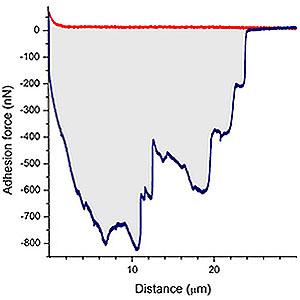Advantages of FluidFM compared to classical AFM methods
Cell adhesion to surfaces represents the basis for niche colonization and cell survival. Single-cell force-spectroscopy studies, however, are often hampered by the relatively slow pace at which a statistically relevant amount of data can be obtained. Potthoff et al. [see Link below] have recently shown that FluidFM® can dramatically increase the amount of data that can be recorded in a single day.

By applying underpressure to the system, FluidFM® cantilevers can attach to a selected cell within seconds. Likewise, the probe can be immediately re-used after each adhesion experiment by releasing the detached cell from the probe through the application of overpressure. The maximum cell adhesion forces measured in the study were in the range of 500 pN to 1600 nN. The latter value represents a one-order of magnitude increase compared to conventional AFM approaches.
Related content:
- AFM force spectroscopy on a polymer blend
- Single molecule force spectroscopy of bacteriorhodopsin
- Spring constant calibration by frequency sweep
Flex-ANA
- Flex-ANA measurement on gelatin hydrogels
- Flex-ANA measurement on medical tubings
- Flex-ANA measurements on living cultured cells
Flex-FPM
- Bacterial adhesion force quantification by fluidic force microscopy
- Colloidal spectroscopy with FluidFM®
- Colloidal Properties of Recombinant Spider Silk Protein Particles
- Deformability Assessment of Waterborne Protozoa Using a Microfluidic-Enabled Force Microscopy Probe

